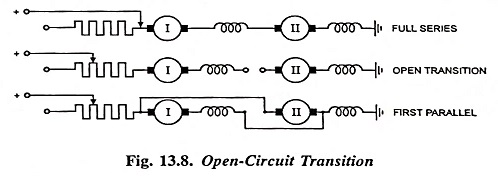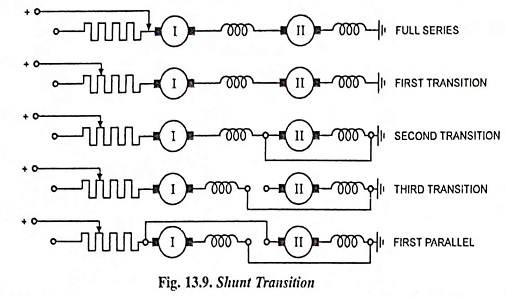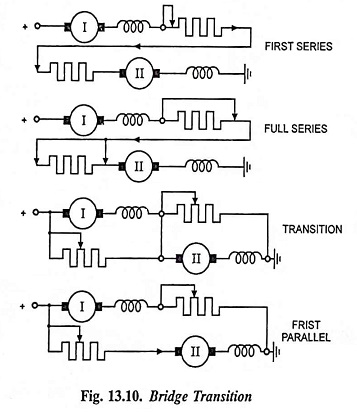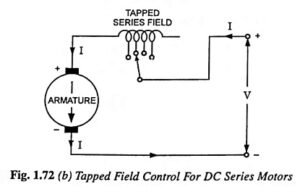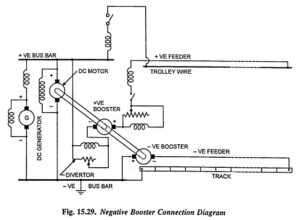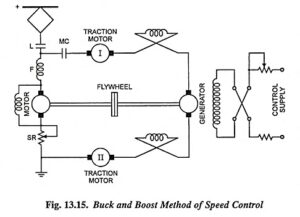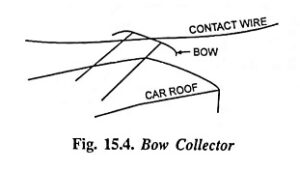What is Transition Method in Electric Traction?
The methods of changing-over the connections from one grouping to another are known as transition method. The change-over from full series (when the two motors are connected in series and voltage across each motor is equal to half of the supply voltage) to first parallel (when the two motors are connected in parallel and part of the starting resistance is reinserted in the circuit to cause the voltage drop equal to half of the supply voltage) is possible by three methods.
- Open-circuit transition
- Shunt transition and
- Bridge transition.
1. Open-Circuit Transition
The various steps involved in open-circuit transition are shown in Fig. 13.8. In open-circuit transition first the series connection between the motors is disconnected and power is switched off with full load current. Then some of the starting resistance is reinserted in the circuit, the two motors are connected in parallel and supply is restored. It causes interruption of torque, and therefore, its use is limited to very small units.
2. Shunt Transition
In this transition method first the motors are run up and brought to full series position by cutting out the external resistance gradually. Then some resistance is reinserted, one of the motor is short circuited, one end of the short circuited motor is opened and finally connected across in such a way that motors are placed in first parallel. The series resistance is now gradually reduced to zero and the motors are placed in full parallel. There is a jerk in this system as one motor is shorted and ceases to act and then other jerk when it is reinserted. This method is employed in tramways, industrial locomotives and main line locomotives. It is preferred for voltages above 600 volts.
3. Bridge Munition
In this transition method the starting resistance is split up into two equal parts. The motors and starting resistances are connected in series, as shown in Fig. 13.10 (first series). The starting resistances are gradually cut out and the motors come in full series, as shown in the figure. In the transition each motor have a section of the starting resistance in parallel with it and two such combinations are put in series with each other, then the bridge link is removed and the motors are placed in first parallel. Now the external resistance is gradually reduced to zero and the motors come in full parallel.
The advantage of the bridge transition method is that during transition, the motors always remain connected to the supply and as the resistances are so adjusted that the value of current remains the same, the torque remains constant, and therefore, uniform acceleration is obtained without causing inconvenience to the passengers. This method is used for railway traction. In case this method is employed for voltage above 600 V, double contacts at series links are required in order to avoid heavy arcing due to heavy current.

